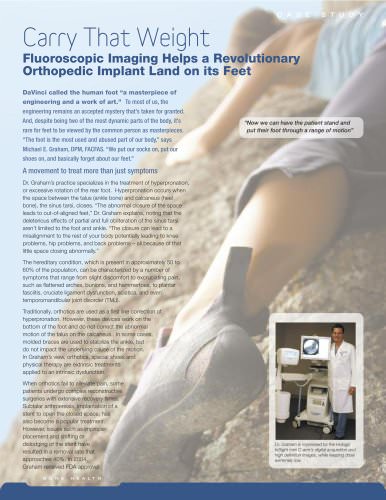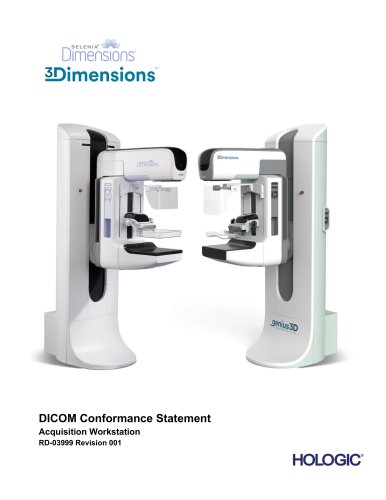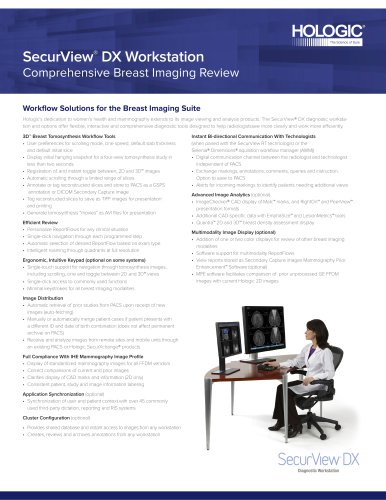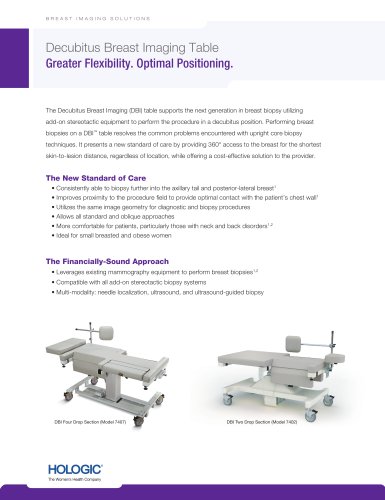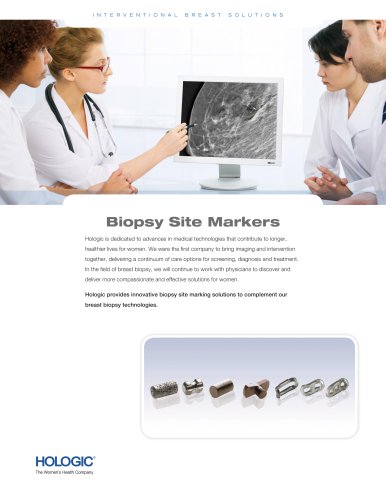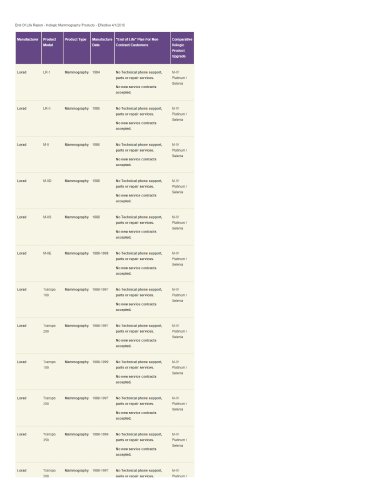 Website:
Hologic
Website:
Hologic
Catalog excerpts

C A S E S T U D Y Carry That Weight Fluoroscopic Imaging Helps a Revolutionary Orthopedic Implant Land on its Feet DaVinci called the human foot “a masterpiece of engineering and a work of art.” To most of us, the engineering remains an accepted mystery that’s taken for granted. And, despite being two of the most dynamic parts of the body, it’s rare for feet to be viewed by the common person as masterpieces. “The foot is the most used and abused part of our body,” says Michael E. Graham, DPM, FACFAS. “We put our socks on, put our shoes on, and basically forget about our feet.” “Now we can have the patient stand and put their foot through a range of motion” A movement to treat more than just symptoms Dr. Graham’s practice specializes in the treatment of hyperpronation, or excessive rotation of the rear foot. Hyperpronation occurs when the space between the talus (ankle bone) and calcaneus (heel bone), the sinus tarsi, closes. “The abnormal closure of the space leads to out-of-aligned feet,” Dr. Graham explains, noting that the deleterious effects of partial and full obliteration of the sinus tarsi aren’t limited to the foot and ankle. “The closure can lead to a misalignment to the rest of your body potentially leading to knee problems, hip problems, and back problems – all because of that little space closing abnormally.” The hereditary condition, which is present in approximately 50 to 60% of the population, can be characterized by a number of symptoms that range from slight discomfort to excruciating pain, such as attened arches, bunions, and hammertoes, to plantar fasciitis, cruciate ligament dysfunction, sciatica, and even temporomandibular joint disorder (TMJ). Traditionally, orthotics are used as a rst line correction of hyperpronation. However, these devices work on the bottom of the foot and do not correct the abnormal motion of the talus on the calcaneus. In some cases, molded braces are used to stabilize the ankle, but do not impact the underlying cause of the motion. In Graham’s view, orthotics, special shoes and physical therapy are extrinsic treatments applied to an intrinsic dysfunction. When orthotics fail to alleviate pain, some patients undergo complex reconstructive surgeries with extensive recovery times. Subtalar arthroereisis, implantation of a stent to open the closed space, has also become a popular treatment. However, issues such as improper placement and shifting or dislodging of the stent have resulted in a removal rate that approaches 40%. In 2004, Graham received FDA approval B O N E H E A L T H Dr. Graham is impressed by the Hologic InSight mini C-arm's digital acquisition and high denition images, while keeping dose extremely low.
Open the catalog to page 1
center ORs to check placement during the actual procedure.” Answers in plain sight with InSight Dr. Graham takes it a step further. “Without the dynamic uoroscopic images the patient doesn’t know what their true deformity is and neither does the doctor. I had a chiropractor come in with chronic heel pain. He wanted the traditional treatments but he did not want to have the stent procedure performed for whatever reason. Once he got up on the uoroscopy unit and he saw exactly what his deformity was, the next statement out of his mouth was “Okay. When can I get this done?” So that’s just how...
Open the catalog to page 2All Hologic catalogs and technical brochures
-
3Dimensions
139 Pages
-
Affirm™
2 Pages
-
SecurView Manager
2 Pages
-
SecurView RT
2 Pages
-
SecurView DX
2 Pages
-
SecurXchange
2 Pages
-
Biopsy Site Markers
4 Pages
-
EOL - Mammography Products
11 Pages
-
Hologic Product Catalog
108 Pages
-
The Right Biopsy Solution
12 Pages

